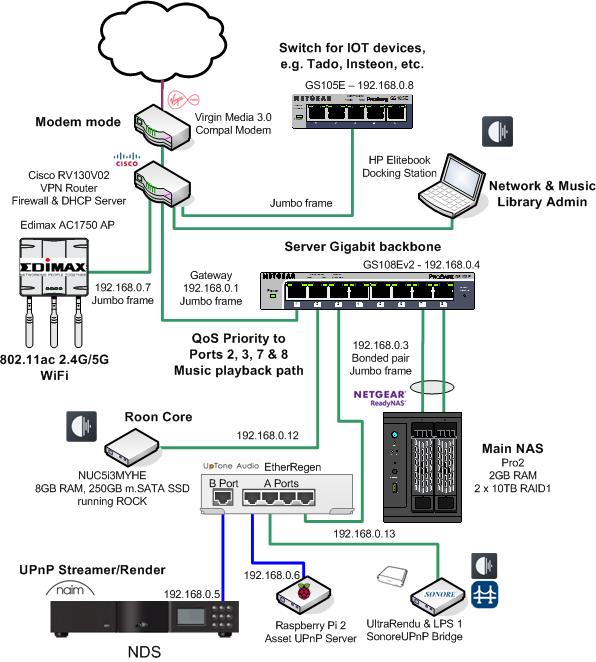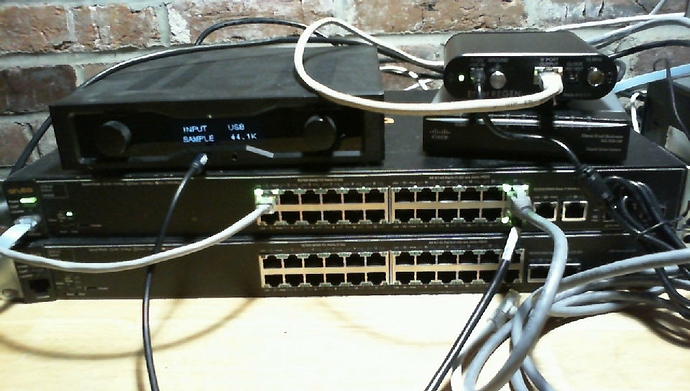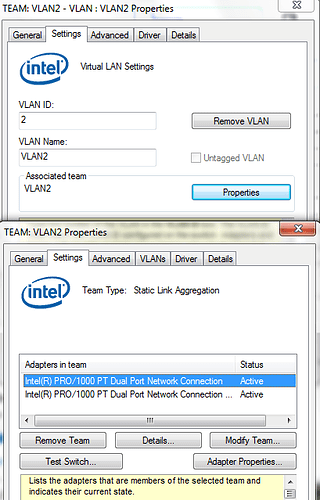People who buy into this kind of products tend to justify their purchase with some mystical sound improvement they experienced. They need to make sense in spending sometimes 1000’s $ in doubtful products.
No, I was perfectly happy if there was no different against the CIsco SGA 5-port it replaced, to pack it back in the box and ship it back, availing of the return/refund clause Uptone give.
But since there was an SQ improvement, which continued to improve as the unit burnt-in, there was no need. Once the improvements stabilised over the extended period and back/forward comparisons were undertaken to determine what was being hear, I then made this posting, to share my experiences.
As I have already said
I suspect we will have to choose to differ and leave it here.
I have heard SQ improvements while listening to music in my system and the configuration I described above.
You believe that there shouldn’t be any difference, but have not either heard a system with one applied or have not auditioned one for yourself in your own system.
Well, I have to choose here between some measured performance results and you, @simon_pepper and what you heard in your system.
While I value your experience, my experience tells me to put also some weight on these ASR measurements.
Wish you a peaceful time and lots of good listening experience with your music.
Not just me - see for multiple users who have reported SQ improvements in their systems and configurations https://audiophilestyle.com/forums/topic/57519-uptone-audio-etherregen-listening-impressions/
If it helps, I have adjusted my network diagram to show the Music-related networking connections
.This takes out the backup NAS units, IoT devices, UPS provision, networked AV equipment, Wireless Roon endpoints/zones etc.
I setup an Aruba 2530 with VLAN 2, Ports 23,24 in a Static LAG going to a 2 port Intel Server NIC in a Dell Desktop as end point. Port 1 is also in VLAN 2 and goes to my Laptop acting as a file server.
Port 23 goes to EtherRegen B side and A side goes to the Intel Server NIC. Port 24 is direct from the Aruba switch to the Intel NIC.
Using JRiver Media Center 26
I can start play back and swap out cables without any interruption to playback (seelinked video).

Hi,
So what’s the differences when you switch between port 23 & port 24?
Did you watch the linked video? There was no difference and at one point I pulled both cables and the track was still playing.
Yes, I did watch and see that connection and data flow can be made directly and then through the EtherRegen, in your configuration.
My question was in the difference in SQ in playback when the playback path is being made through the EtherRegen to your main system.
What is your music server and DAC?
I presume you are also on the Uptone forums
Can we focus on the fact that you heard music playing back with no connectivity what so ever?
Using JRiver 26 for playback. Files hosted from my HP Elite Book. DAC is Emotiva DC-1, headphones are AKG 701 and AT-M50x
The bottom line is there is no change and you can even pull the cable and there is no interruption.
So are we playing off of the cable or out of buffer?
So your DAC is plugged into a PC over USB, and your headphones into the DAC.
Your music library is also a PC, i.e. no piece of equipment in your playback path, other than the DAC plugged into a noisy computer, via a direct USB connection is HiFi equipment.
So I don’t know how JRiver on a PC works as a playback device, but obviously buffers, given it is an application running on a general purpose machine, where there could be other computing tasks running.
Have you ever tried a dedicated NAA for the USB output into the DAC, would probably given vastly superior performance over a general purpose PC?
Also a dedicated Music Server would probably help the quality of the playback path too.
From what I’ve seen 99.9% of all current DAC are primarily hosted via USB.
What noisy computer? How do you know this? What empirical evidence do you have? I see an HP Elite Book in your diagram also. Then there’s the NetGear NAS. As a network engineer we wouldn’t touch NetGear.
Your NAIM is a computer also. I’ll put up a PC and USB DAC against your NAIM any day of the week.
Also all NAS devices are computers also.
[quote=“simon_pepper, post:33, topic:88247”]
So I don’t know how JRiver on a PC works as a playback device, but obviously buffers, given it is an application running on a general purpose machine, where there could be other computing tasks running.[/quote]
msconfig will allow a quick reduction in startup and other programs. But your NAIM is also running tasks that aren’t directly related to audio.
The system I’m using runs at 7-9% CPU utilization while playing back 24/192.
I can do convolution with JRiver. Does the NAIM streamer have the ability? I would argue that is a large positive for going with a DIY PC and JRiver.
As a network engineer that has done AES67 and AVB I can say without a doubt yes. The last audio distribution system I worked on was $650,000, involved 150 end points, a layer 2 diameter of 4 and round trip ping less than 2ms.
I was responsible for standing up the core Nexus 9300 with VRP ISL over dual QSFP+ links. Those two switches alone were $32,000.
For Network Admin, and not powered during music playback.
It is, as is the UltraRendu running the SonoreUPnP, but they are devices optimized as dedicated devices for audio playback and attention has been given to the noise processing and the power supplies.
The NAS is a general-purpose Network connected Storage device, yes.
The ROCK based Roon Server is running on an Intel NUC, a general-purpose computer, but it is running the embedded dedicated OS, RoonOS, which just runs the Roon Core, nothing else. Both these devices are ‘upstream’ of the EtherRegen and the Naim network player.
The Naim NDS is powered by the 555PS-DR, connected by 2 umbilical cables with aerospace-grade connectors. There are multiple discretely regulated power rails then dropping directly for the streamer board, the DAC chips, then a completely separate feed for the discrete Analogue board. And it is just 100% focused on processing the audio playback stream. It runs no other tasks. It is a network player, so optimized to take input from a UPnP based server, over an Ethernet connection. There is no USB input for a packed based data stream. There are 2 electrical S/PDIF inputs. So not a computer audio based DAC as such.
The UltraRendu is powered by the Uptone UltraCap LPS power supply, which is optimized not be introducing noise into the circuits.
That’s why John Swenson, the designer of the EtherRegen built it to eliminate any noise from upstream components, and ‘Regenerate’ the Ethernet packets for the downstream network connected DAC or network player.
If that downstream device is just injecting noise from its power supply or motherboard, or a noisy USB connection to a DAC, then its isolation function is mitigated.
Hey, the EtherRegen will make a difference in some environments and not others, and more of a difference in others - no everyone’s environment is the same.
Obviously you have not heard any benefit, so you have the opportunity of returning the device to Uptone for a full refund.
There are many owners of the EtherRegen that are reporting SQ improvements in their systems and network configurations, and reporting them on the Uptone forum, see the link in earlier posts.
I am not connected in anyway to Uptone, the company, nor are representing them, or paid to promote their products, and was only reporting here, that in my system and configuration, I experienced a good and worthwhile improvement from replacing an unmanaged Cisco SG110D-05 5-port switch with the EtherRegen.
I’m off to listen and enjoy some music on my system. So long.
.
I’m shocked with that much kit and expense that there was that much performance left on the table by NAIM for the EtherRegen to pick up.
I’ll put this out there:
A properly configured computer with a properly designed DAC is going to bit stream and produce stellar results just as well as a dedicated Lumin, NAIM, NAD, Auralic etc…
Most if not all these streamers are running some form of *nix. An OS that can be stripped down for a streamer can be stripped down for a desktop computer.
Anyone that thinks this isn’t true you let me know when you want to test it all out blinded.
Isn’t that exactly what “Lumin, NAIM, NAD, Auralic etc…” sells to their customers? A properly designed computer for the task. Who would argue against that? ![]()
I agree. Both approaches are valid.
If I mention a Computer (Win, Linux, MacOSX) + a USB DAC all the sudden it’s Noisy, Dirty… vs an all in one unit.
Review of the EtherREGEN at Melco £1999 ethernet switch
“I was pretty much expecting this to be the result but thought why not give it a go.”
People call this expectation bias.
The EtherRegen’s PCB layout picture just grabbed my attention, and got me shaking my head in disbelief regarding claims about the device’s benefits.
It’s copper layout for all relevant devices, involved with the differential transmit/receive channels, violates their manufacturer’s design guides, which i.e. stress the need to keep corresponding pairs of Tx+/Tx- and Rx+/Rx- traces equally long and their impedances matched as closely as possible.
As executed in this glaring example of how to not do these things, electromagnetic interference has a much easier job of negatively influencing the workings, and simple signal isolation will never fix that problem.
OTOH, that may be the very reason, why it “sounds different”…
![]()


